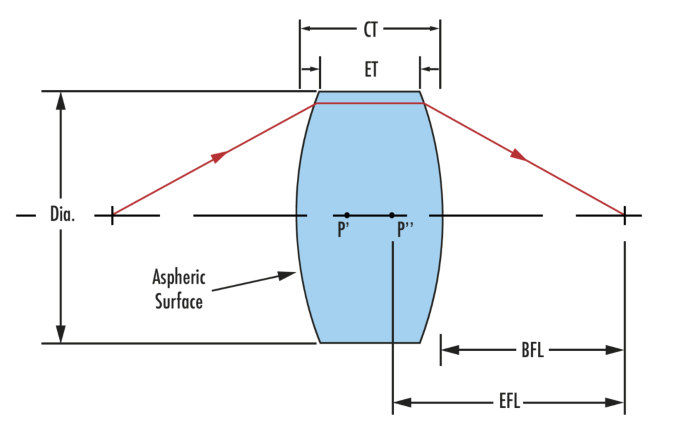
 TECHSPEC® 부품은 에드몬드 옵틱스가 설계, 사양 지정 및 제조하는 제품입니다. 더 알아보기
TECHSPEC® 부품은 에드몬드 옵틱스가 설계, 사양 지정 및 제조하는 제품입니다. 더 알아보기
TECHSPEC® Double-Sided Aspheric Lenses는 1:1 이미징 용도에 안성맞춤인 제품입니다. f/#가 1.0이면서 NA 값이 높은 이 렌즈는 집광 용도에 이상적으로 사용할 수 있으며, 10 - 50mm의 직경으로 제공됩니다. 또한 Bi-convex lens로도 알려진 double-convex lens로서 시스템에 적용되는 광학 요소의 수를 크게 줄여주면서도 뛰어난 성능을 발휘합니다. TECHSPEC® Double-Sided Aspheric Lenses는 1X 확대용으로 최적화되었으나, 비구면 설계를 채택하여 최대 4X 배율까지 수용하면서 우수한 성능을 제공합니다.

에드몬드옵틱스는 특정 어플리케이션 요건을 충족할 수 있는 광학 및 이미징 부품에 대한 포괄적인 맞춤형 제조 서비스를 제공합니다. 에드몬드옵틱스는 프로토타입 개발, 본격적인 생산 준비 단계 등 단계와 관계없이 고객의 니즈를 충족하는 유연한 솔루션을 제공합니다. 에드몬드옵틱스의 엔지니어는 전 개발 과정을 지원합니다.
에드몬드옵틱스의 제조 역량:
자세한 내용은 에드몬드옵틱스의 맞춤형 제조 역량 페이지를 확인하거나 여기로 문의 바랍니다.
본사 및 지사별 연락처 확인하기
견적 요청 도구
재고 번호 입력 필요
Copyright 2023, 에드몬드옵틱스코리아 사업자 등록번호: 110-81-74657 | 대표이사: 앙텍하우 | 통신판매업 신고번호: 제 2022-서울마포-0965호, 서울특별시 마포구 월드컵북로 21, 7층 (서교동, 풍성빌딩)
The FUTURE Depends On Optics®